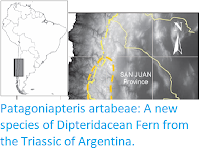Ferns of the genus Grammitis are typically small epiphytes (Plants that grow on other Plants) with wide, tropical distributions. However, one species, Grammitis azorica, is an island endemic, with a very limited distribution within the subtropical Azores Islands. The species was first described in 2001, when 22 specimens were found growing on the trunks of Azores Juniper Trees, Juniperus brevifolia, in a montane forest on the island of Flores. Despite extensive searches, no further specimens were found in over a decade, and in 2017 the species was listed as Critically Endangered under the terms of the International Union for the Conservation of Nature’s Red List of Threatened Species.
In a paper published in the Biodiversity Data Journal on 28 January 2022, Rui Bento Elias and Fernando Pereira of the Azorean Biodiversity Group of the Centre for Ecology, Evolution and Environmental Changes, and the Faculdade de Ciências Agrárias e do Ambiente at the Universidade dos Açores report the presence of Grammitis azorica on two further islands within the Azores.
Grammitis azorica is a very small species, with fronds reaching about 60 mm in length, which mainly grows on the trunks of Juniper trees. Its fronds are oval, without partitions, and have a black margin and large, globose sori (spore-producing bodies) on their undersides.
Although Grammitis azorica has only been recorded on the island of Flores, in 1987 botanist Alfred Hanson described a small, epiphytic Fern with black margins to its fronds on Pico Island. Hansen provisionally assigned these Ferns to Grammitis ebenina, a species otherwise restricted to Central Africa and Atlantic islands close to the equator. This diagnosis now seems unlikely, making it possible that this represents another population of Grammitis azorica.
In 2013 Elias and Pereira discovered two specimens of Grammitis azorica on Terceira Island, although they did not publish these findings at the time. These specimens were in two separate Natural Reserves, separated by about 3 km, the Biscoito da Ferraria e Pico Alto and Terra Brava e Criação das Lagoas, and both were growing on the trunks of Juniper trees in Juniper-Holly montane forests.
In 2021, during an expedition to Pico Island, Elias and Pereira discovered two further specimens of Grammitis azorica, one in a protected landscape area neighbouring the Pico Mountain Natural Reserve, and the other 19 km to the east, in Caveiro Natural Reserve. Both these new plants were growing on the trunks of Juniper trees in mixed Juniper-Holly montane forests.
The discovery of four new specimens of the Critically Endangered Grammitis azorica on two different islands emphasises the importance of the Juniper-Holly montane forests of the Azores as a biodiversity hotspot. The new records extend the known range of the species from one island to three, and the altitudinal tolerance from 650-800 m to 640-1130 m, although it is restricted to a single biome, and that biome is generally restricted to 600-1000 m. Botanists have been searching for new members of this species for many years, with only four new specimens found, which emphasises both the rarity of the species, and the importance of the Lomba do Fogo forest, where one of the new specimens was found; this forest is currently part of the Pico Natural Park, which is protected, but only to a low level, but close to the Pico Mountain Natural Reserve, which is more highly protected; Elias and Periera suggest that the Lombo de Fogo be transferred to the Pico Mountain Natural Reserve, thus significantly improving its conservation status.
Elias and Periera further note that many of the montane forests of the Azores are hard to access, and are therefore relatively under-explored, raising the hope that further individuals or even populations of this Critically Endangered Fern will be discovered in the future.
See also...



Follow Sciency Thoughts on Facebook.
Follow Sciency Thoughts on Twitter.






